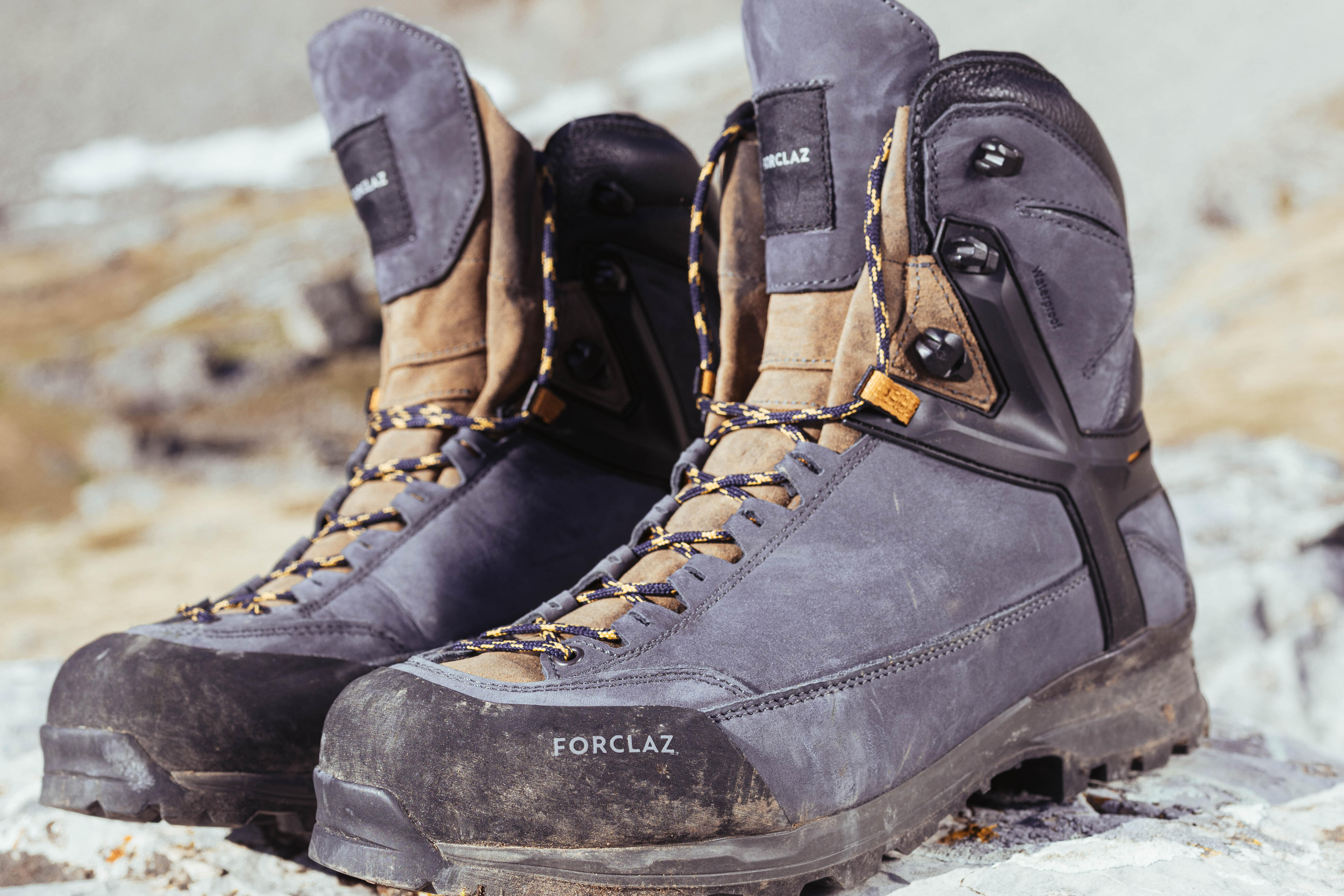2/ The criteria
Do you find it difficult to understand the difference between our models?
We have detailed the technical characteristics of the essential elements of our models. With these criteria, we hope you'll find something to suit you!

You’re going on a trek and you need a pair of high boots! But you need more detailed information to be able to choose them. You’re in the right place!
Choosing a pair of shoes to go trekking is very important, and requires understanding several important criteria: flexibility, waterproofing, grip, weight and material.
A high top shoe is a high top shoe that covers the entire malleolus. It is a shoe that has a minimum of 2 hooks above the ankle! Not to be confused with "mid-top", which have only one hook at the ankle.
We recommend high-top shoes for trekking. Whether you're going for a night in a bivouac or weeks in the mountains. Your shoe will be a great asset thanks to its better ankle support. It is an asset for the safety of your travels.
Studies carried out by Decathlon's Sportslab have convinced us that high top shoes provides better protection for your feet and ankles during a multi-day trek.
Indeed, high top shoes protect your ankle from knocks and impacts, especially if you walk on loose scree. On the other hand, two minimum tightening hooks above the ankle provide a foot support that is only available in high shoes.
You will see people trekking with mid, low or even trail shoes. Some people have a habituated and strengthened ankle. They can afford it, but will always take the risk of twisting an ankle or injuring themselves on impact. With the elevation changes, the length, the obstacles and the fatigue, you will need a protective and robust shoe, which the trail shoe does not offer.
Going on a trek in the mountains is often synonymous with autonomy. This means you'll be carrying more than you would on a few hours' hike where you're basically carrying your own weight, drinks and a snack or picnic lunch.
On a trek, you take enough shelter, sleep, food and water for several days. This load is transferred to all your joints, especially those of the foot and ankle. We recommend high-top shoes and using of poles..
Do you find it difficult to understand the difference between our models?
We have detailed the technical characteristics of the essential elements of our models. With these criteria, we hope you'll find something to suit you!
On wide paths, and without too many difficulties, it is better to opt for soft shoes. This is because they allow for a natural rolling of the foot, and you will cover many kilometres effortlessly.
The Santiago de Compostela trail is an excellent example of this type of terrain.
To make it heavier, protections are included in the most strategic areas : front and back of the foot.
Lastly, the high-cut upper on these models provide good heel support, without making them too stiff, but serving to compensate for small footing misjudgement owing to tiredness, without restricting the joint's range of motion
On narrow and uneven mountain paths, you should choose shoes that offer more rigidity and support, in order to be more comfortable on the technical parts: rocky slabs, slopes, uneven mud, etc.
These more technical trails are generally more "aggressive" for the shoes than roads. This is why the protections are more important, and the materials more resistant, by superposition effect in general.
The collar of the shoe offers more support than on the models designed for cross-country trails, in order to be more comfortable on breaks or slopes.
For treks that are mostly off the beaten track, where cairns are sometimes the only landmarks, it is preferable to opt for rigid, higher shoes that offer maximum protection. Crossings of ice fields, climbing scree and other passages offering "climbing" will thus be approached more serenely. The models will be close to the very rigid mountaineering boots for precision, support and protection.
A good example of this type of trek would be the Tour du Mont-Blanc.
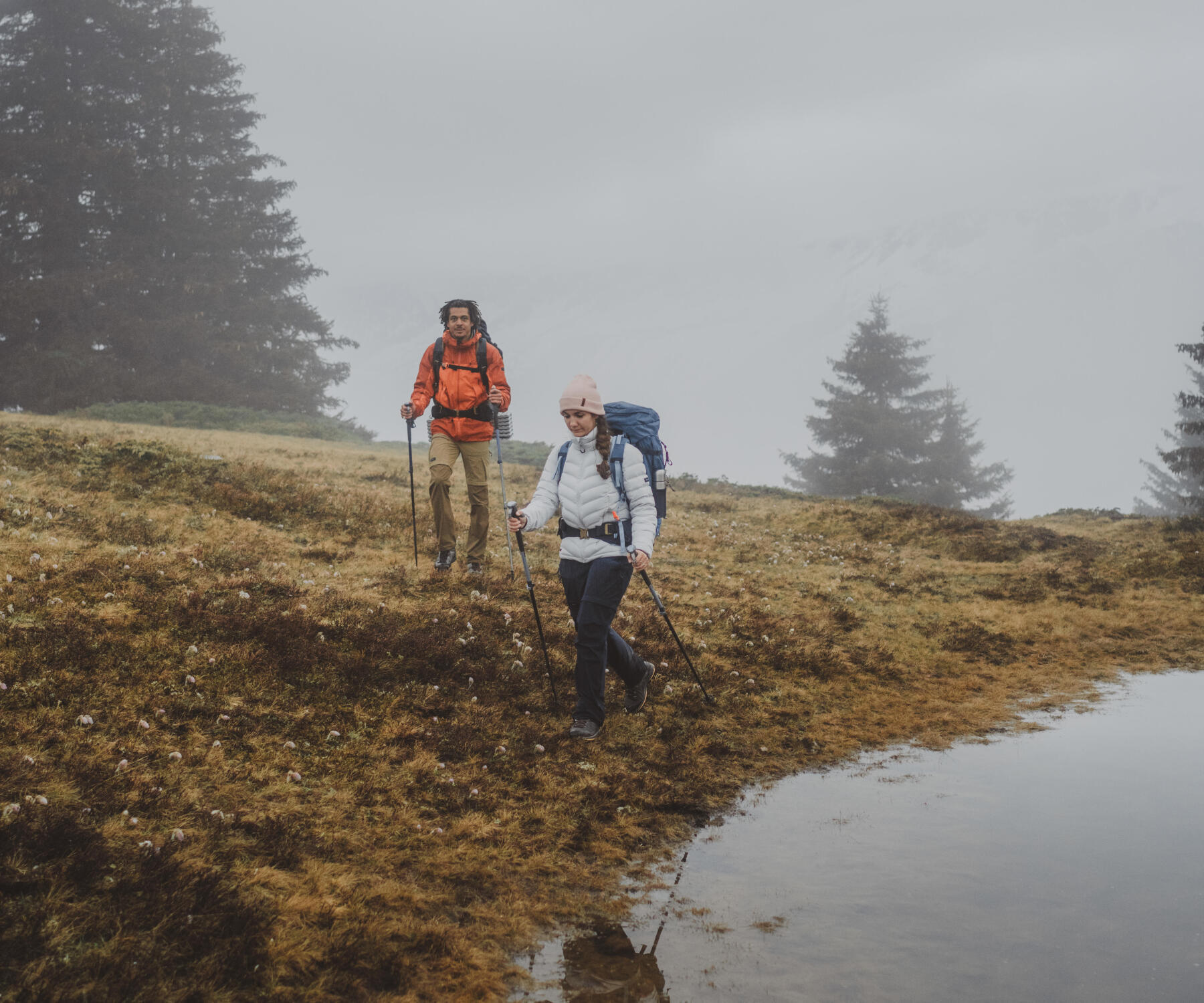
Footwear equipped with a membrane is laboratory and field tested to ensure optimal waterproofing and breathability. To start, they are immersed in water with pressurised air inside to check that no bubbles form on the surface of the boot. Then they are placed on a mechanical arm that simulates walking and half immersed in water to check that the inside of the shoe remains perfectly dry..
During the waterproofness test, we test 5 levels of waterproofness :
1/5 : 2,000 bends - for about 4 km and 30 min of walking
2/5: : 10,000 bends - for about 10 km and 3 hours of walking
3/5 : 30,000 bends - for about 15 km and 6 hours of walking
4/5 : 50,000 bends - for about 20 km and 8 hours of walking
5/5 : 100,000 bends - for about >20 km and 24 hours of walking
You can find these levels of waterproofing on our product descriptions.
The waterproofing of boots is often compromised because water gets in at the collar of the boot. To keep your feet dry for longer, it is advisable to use a waterproof gaiter or mini-gaiter that will prevent water as well as pebbles and sand from getting inside through the top of the boot.
Another very important feature of a hiking/trekking shoe is the type of sole. Indeed, the grip and adherence, provides safety for the trekker.
We wanted to give you the choice, depending on your preferences, to opt for a flexible or rigid shoe on any type of terrain. For this reason, we at Forclaz have decided to offer a maximum level of grip on all our models, designed for both easy paths and rough terrain..
- This is our commitment to safety -

Tne CONTACT® Label
The grip of some of our mountain boots is labelled CONTACT® offering a
very good grip on dry or wet off-road and on dirt or rocks. The notching also gives you grip adapted to muddy or wet terrain.
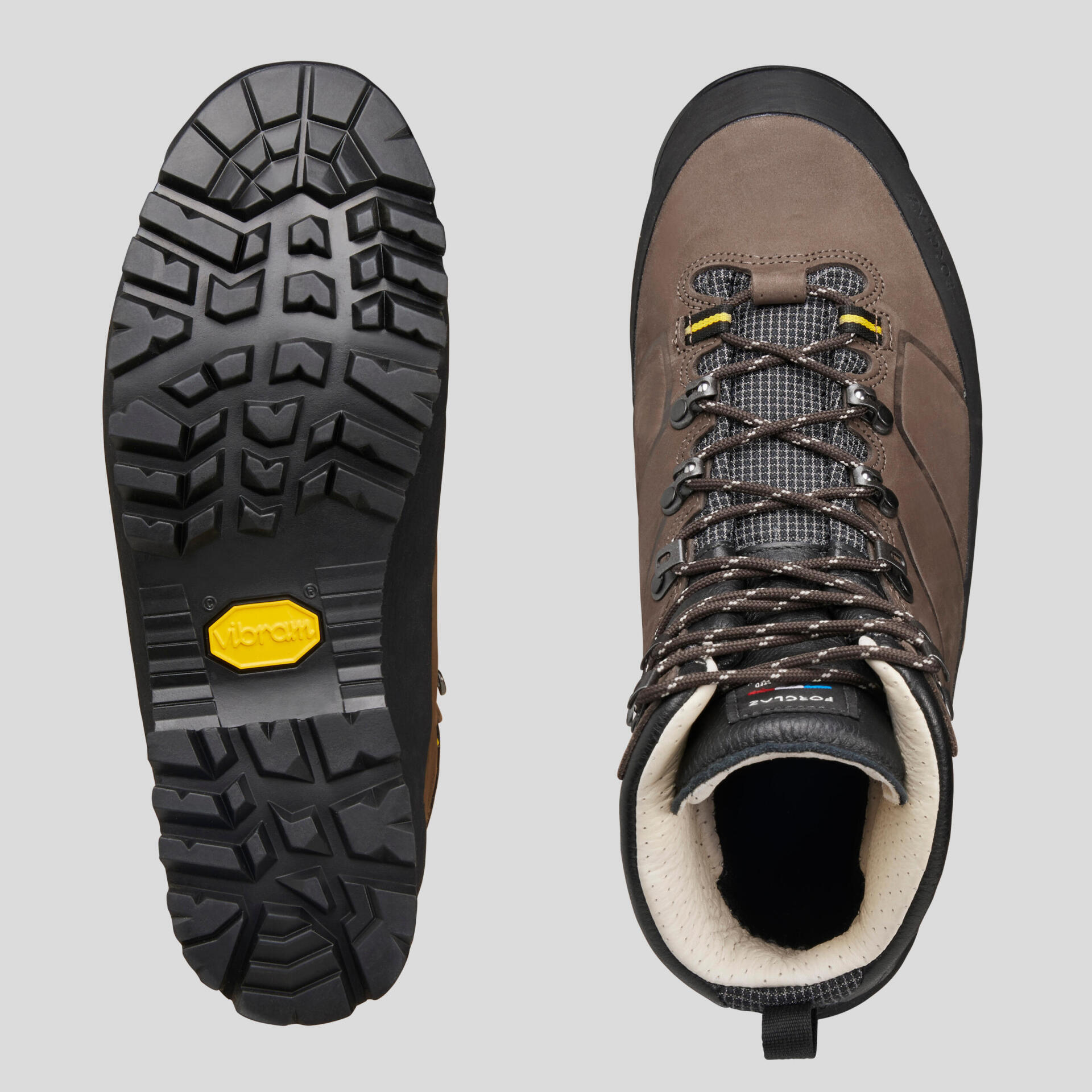
The VIBRAM® label
VIBRAM® branded hiking boots with excellent grip on all terrain, dry or wet, earth or rock. Basically invincible! The notching also gives you grip adapted to muddy or wet terrain.
There is no advantage to having a heavy shoe. High top shoes are however heavier than the other models, but they are the best choice for trekking..
The weight of your trekking boot will depend on the other criteria listed: use, material, sole.
Usage
If you are going on easy terrain, you will need the flexibility of the shoe to roll off the foot. Soft shoes will be the lightest. On the other hand, if you are going on mixed and uneven terrain, you will need protective and rigid supports. That's why these models will be a bit heavier.
THE MATERIAL
Depending on your needs, you may choose leather or synthetic. As both materials have strong advantages, leather will be a heavier material than synthetic, but will offer other qualities that synthetic does not have.
The sole
Our soles are made of rubber. They are durable, as the material limits abrasion with the floor. They will be heavier than less resistant plastic soles. Our commitment to soles means that our models will be heavier, but will be durable.
Note: If the model is lighter than the others, it is because there has been a compromise on the support, the robustness or the protections of the shoe.
You will have to wear your shoes for long hours. It is important to have shoes that fit your feet properly.
We offer models adapted for people with a wide forefoot. You will feel more comfortable and less cramped.
Use the comparator tool to select the wide models.

Leather and crust leather
Leather will be a material that offers strength, more durability and also maintenance possibilities unlike synthetic. Split leather will be a more difficult material than leather to maintain over time, but will be more resistant to knocks. Leather, on the other hand, will require more maintenance, but will have a longer lifespan and a better adaptation to your foot.

The synthetic
Textile or synthetic will be a material made to save weight. The material will be easy to clean and maintain, but will be less resistant over time. Our Matryx models have a composition as resistant as leather, but will not have its maintenance capabilities. These Matryx models are the right compromise between weight and strength.
If you have understood all the criteria for choosing your future trekking shoe, come and discover the wide choice of shoes we offer:

Trekking WOMEN’S
Hiking shoes
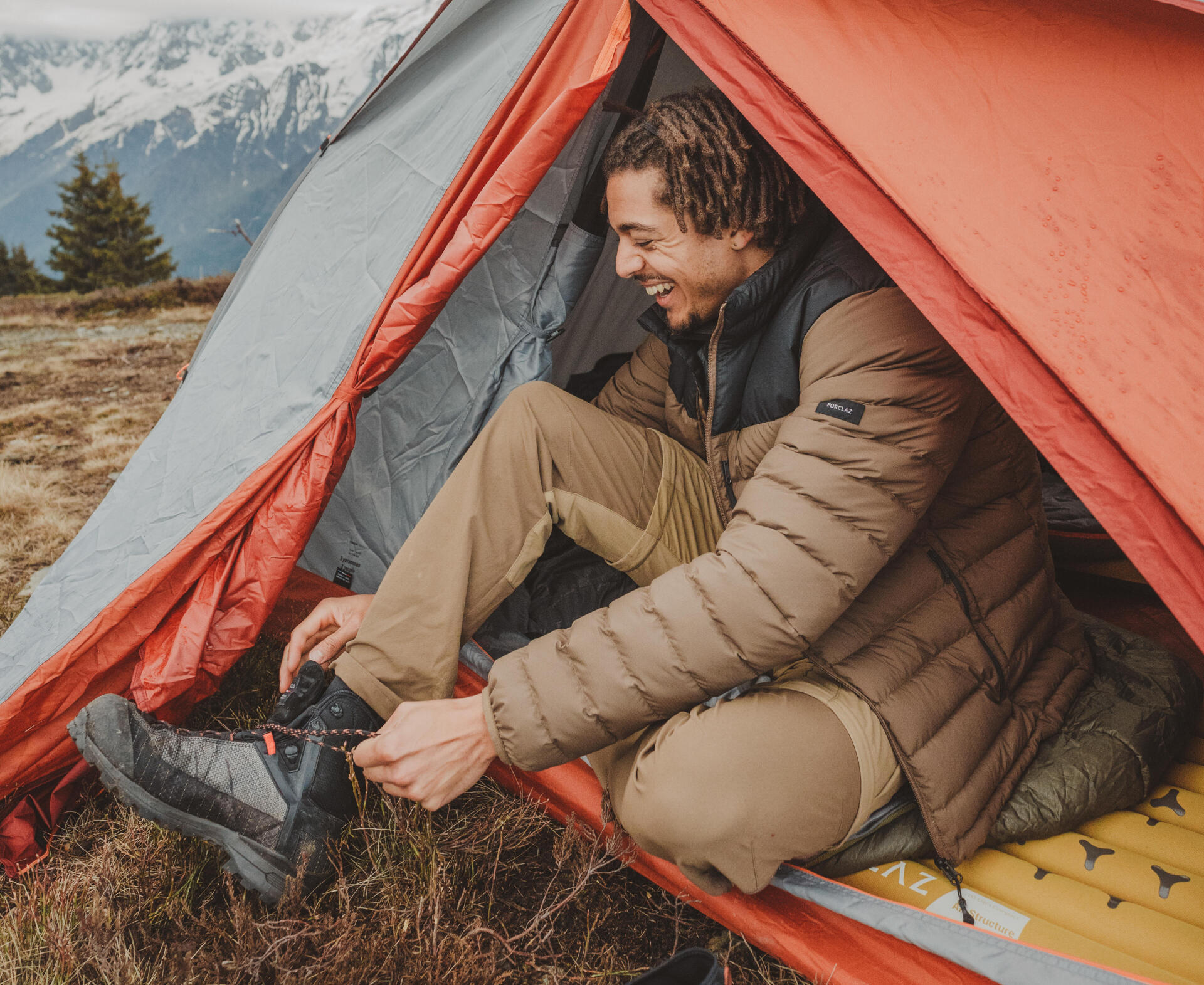
Trekking MEN’S
Walking shoes
Our high top walking shoes are equipped with a blocking hook. It allows better control over the lacing of the shoe. Do not hesitate to play with your lacing to adapt the support of the foot and ankle to your convenience.

It is strongly recommended that you have already walked and hiked in your shoes so that they have adapted to your feet. This could save you from injury during your long treks with heavy loads.
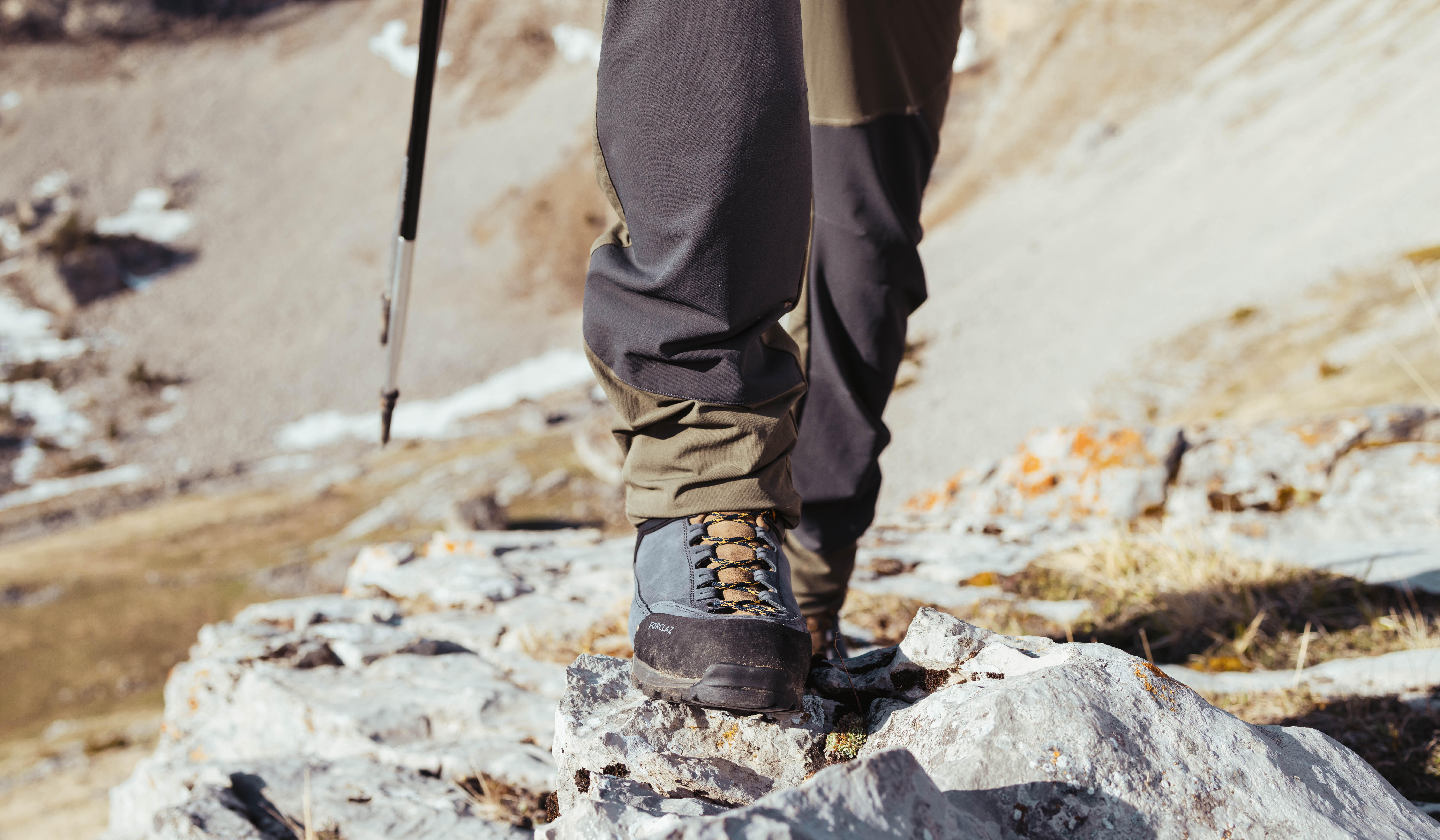
In difficult weather conditions, such as rain, care must be taken when drying your shoes, otherwise they may be damaged. Leave shoes to air dry away from heat sources to avoid damaging the lining or leather of your walking shoe. Removing the soles or putting newspaper in the shoe can be a good trick.
